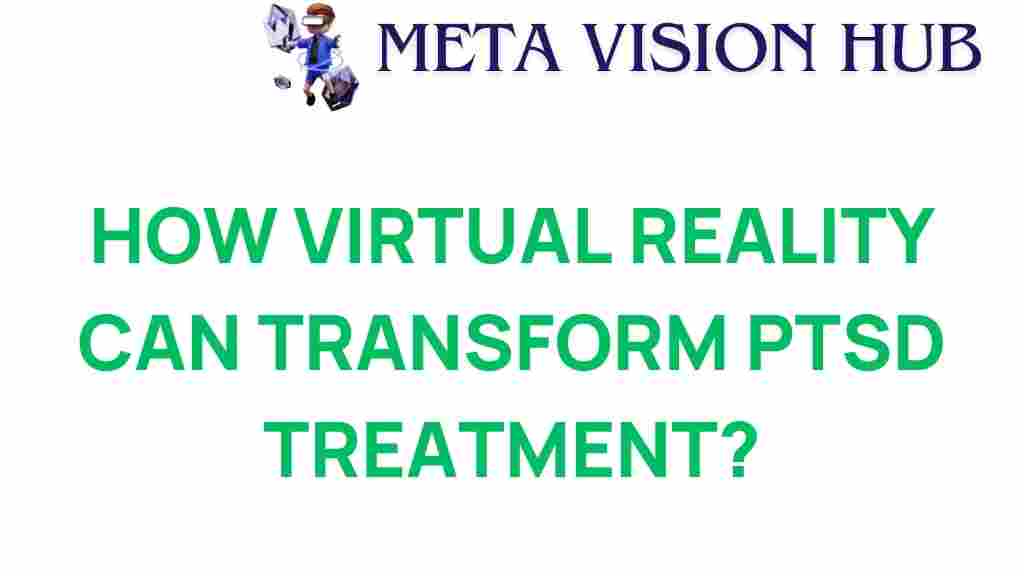How Virtual Reality is Revolutionizing PTSD Treatment
Post-Traumatic Stress Disorder (PTSD) affects millions of individuals worldwide, often resulting from traumatic experiences such as military combat, natural disasters, or personal assaults. Traditional therapy methods, while beneficial, can sometimes fall short in providing the immersive experience needed for effective treatment. However, advancements in technology, particularly through the use of virtual reality, are changing the landscape of PTSD treatment and offering new hope for those struggling with mental health issues.
The Intersection of Virtual Reality and PTSD
Virtual reality (VR) is an innovative technology that creates an immersive experience, allowing users to engage with a simulated environment. This technology is proving to be a game-changer for PTSD treatment, enabling therapists to guide patients through controlled exposure therapy in a safe and supportive setting. By utilizing VR, therapists can recreate specific scenarios that trigger the patient’s PTSD symptoms, helping them confront and process their trauma.
Understanding PTSD and Its Challenges
Before diving into how virtual reality can aid in the treatment of PTSD, it’s essential to understand the disorder itself. PTSD can manifest in various symptoms, including:
- Intrusive memories or flashbacks
- Avoidance of reminders of the trauma
- Negative changes in thoughts and mood
- Heightened arousal and reactivity
These symptoms can severely impact an individual’s daily life, leading to difficulties in relationships, employment, and overall well-being. Traditional therapy methods such as cognitive-behavioral therapy (CBT) have been effective for many, but the immersive nature of VR can enhance these treatments significantly.
The Role of Technology in Healing
With the rise of technology in mental health, therapists can now utilize VR to create tailored treatment plans. The technology allows for:
- Controlled exposure to trauma triggers
- Real-time feedback on the patient’s emotional state
- Safe environments to practice coping mechanisms
- Engaging and interactive experiences to keep patients motivated
This combination of therapy and technology leads to innovative approaches that can result in improved outcomes for patients with PTSD.
Step-by-Step Process: How VR Therapy Works
Implementing VR in PTSD treatment involves several key steps:
- Assessment: The therapist conducts a thorough assessment of the patient’s history, symptoms, and specific triggers.
- Customization: Based on the assessment, the therapist customizes the VR experience to align with the patient’s needs, ensuring a safe yet challenging environment.
- Exposure Therapy: During sessions, patients are gradually exposed to VR recreations of their trauma, allowing them to process their feelings and memories in a controlled setting.
- Real-Time Monitoring: Therapists monitor the patient’s reactions and can adjust the experience in real time to ensure comfort and safety.
- Debriefing: After each session, therapists engage in discussions with the patients to process what they experienced, emphasizing coping strategies and emotional regulation.
This methodical approach not only addresses the symptoms of PTSD but also empowers patients by giving them tools to manage their reactions to trauma.
Innovative Applications of VR Therapy
Numerous studies and clinical trials have demonstrated the effectiveness of virtual reality therapy in treating PTSD. Some notable applications include:
- Military Veterans: VR therapy has shown efficacy in helping veterans process traumatic combat experiences, reducing symptoms like flashbacks and anxiety.
- Survivors of Assault: Victims of sexual or physical assault can safely confront their trauma in a controlled VR environment, aiding in recovery.
- Natural Disaster Survivors: Individuals affected by disasters can engage with simulations of their experiences, allowing for gradual exposure and desensitization.
These innovative applications highlight the versatility of VR in addressing various forms of trauma.
Troubleshooting Common Challenges in VR Therapy
While virtual reality presents exciting opportunities for PTSD treatment, several challenges may arise. Here are some common issues and tips for troubleshooting:
- Discomfort with Technology: Some patients may feel uneasy using VR headsets. It’s essential to provide thorough instructions and allow them to acclimate to the technology gradually.
- Overwhelming Experiences: If a patient becomes overwhelmed during a session, therapists should be prepared to pause the experience and debrief, ensuring the patient feels safe and supported.
- Accessibility Issues: Ensure that the VR equipment is accessible to all patients, taking into account physical limitations or sensory sensitivities.
- Individual Variability: Each patient responds differently to VR exposure; therapists should remain flexible and adapt the treatment according to individual progress.
By being aware of these challenges, therapists can ensure a smooth and productive VR therapy experience.
Conclusion: The Future of Healing with Virtual Reality
The integration of virtual reality in PTSD treatment represents a significant step forward in mental health therapy. This innovative approach not only offers a new avenue for healing but also empowers patients to confront and process their trauma in ways traditional methods may not. As technology continues to evolve, so too will the possibilities for enhancing mental health treatment.
For those interested in exploring virtual reality therapy, it’s advisable to consult with a qualified mental health professional who specializes in this area. By leveraging the power of technology, we can pave the way for more effective treatments and ultimately improve the lives of those affected by PTSD.
For further reading on advancements in mental health technology, check out this comprehensive guide.
To learn more about virtual reality and its impact on therapy, visit the National Institute of Mental Health.
This article is in the category Innovations and created by MetaVisionHub Team
